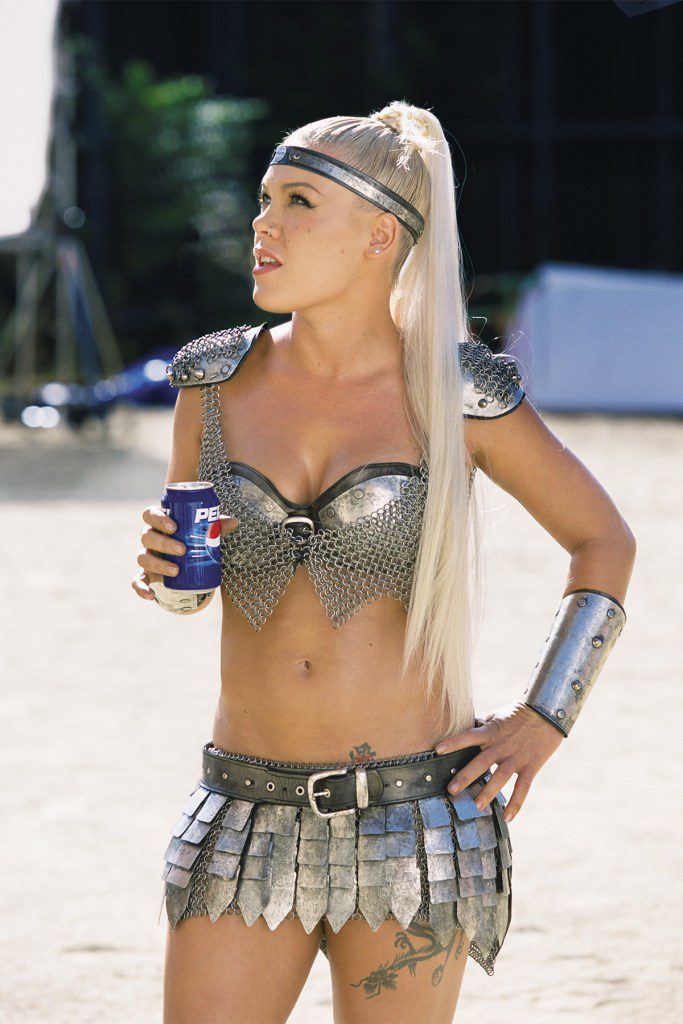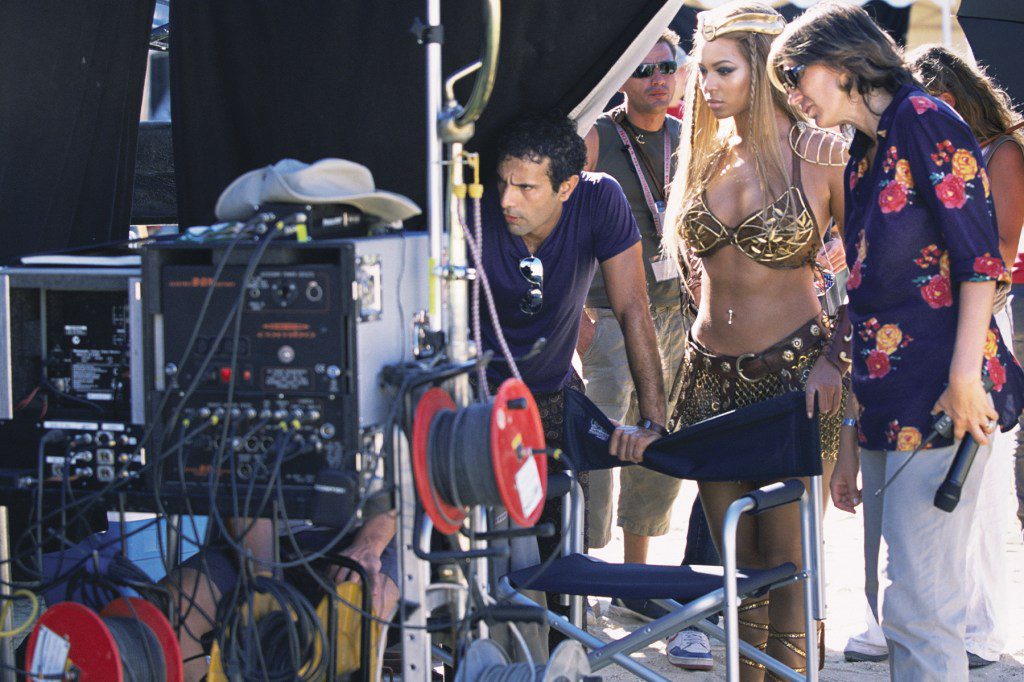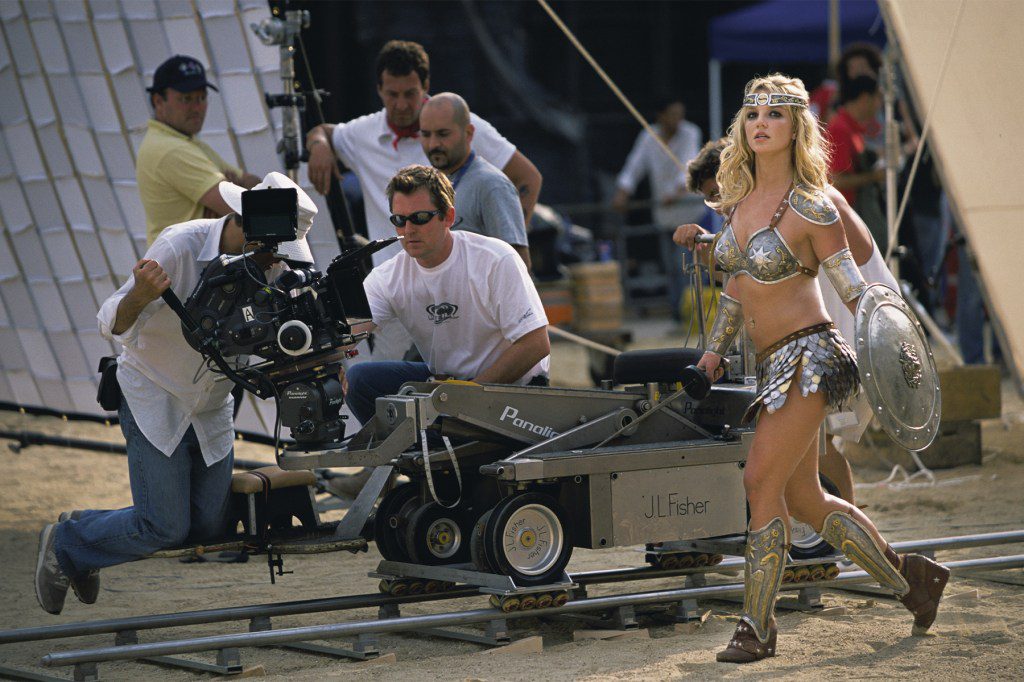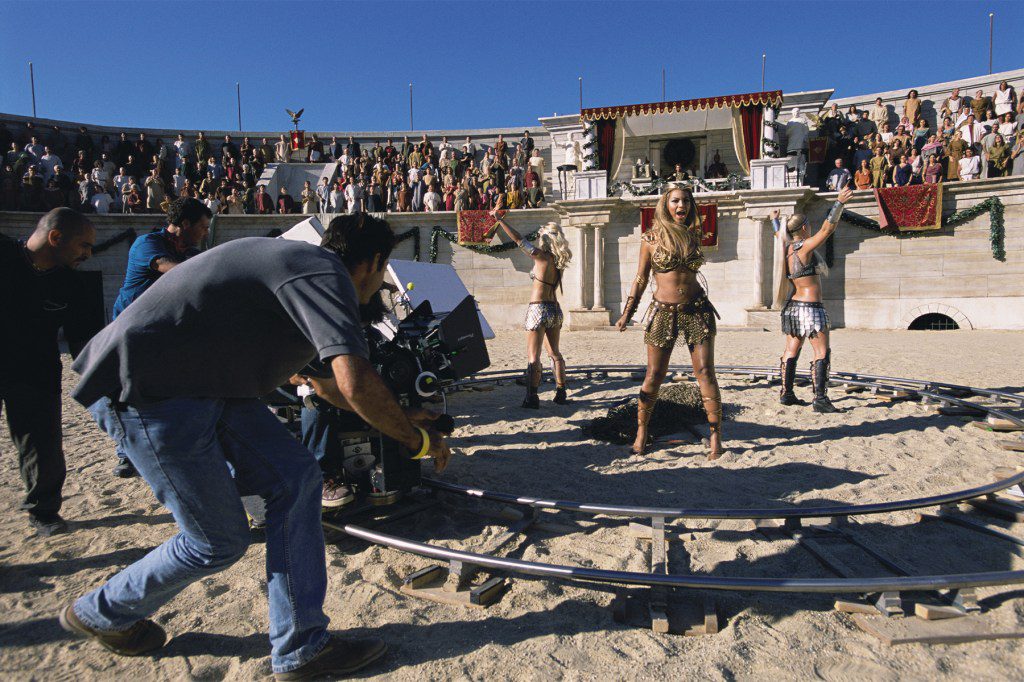A funny thing happened on the way to the Colosseum. That unbelievably epic three-minute Pepsi commercial you surely remember from the early 2000’s where Britney, Pink, and Beyoncé at their full-on fiercest joined forces to commandeer the ancient Roman amphitheater with a diva-liciously badass riff on Queen’s “We Will Rock You”… yeah, you don’t actually remember that.
The fond impressions were planted later, Blade Runner-style, by online fandom — because what should have been herstory’s greatest Super Bowl ad of all time never actually aired in America!
But fret not. We’re excavating the spot on the cusp of its 20th anniversary (and Ridley Scott dropping the sequel to its cinematic inspiration) with insider help from director Tarsem Singh (R.E.M.’s “Losing My Religion”, Immortals) and his longtime producing partner Frank Scherma (co-founder of RadicalMedia and the current Television Academy Chair).
So, grab some strappy sandals for a reverent geek-stroll through how this improbable pop opus came together.
Stomp-stomp-clap-pause — the birth of a classic
Queen’s Brian May and Roger Taylor in character as part of the crowd.
John Gichigi (via Getty)
In the documentary Days of Our Lives, Queen guitarist and noted renaissance man Brian May described how an especially fired-up concert audience broke out into the Liverpool Football Club anthem as the band was leaving the stage. It was a startling but stirring experience that moved May to wonder how such invigorating crowd-sourced energy might be harnessed musically.
Brian May [Queen guitarist and songwriter]: “I went to bed thinking, ‘What could you ask [the punters] to do?’ They’re all squeezed in there, but they can clap their hands, they can stamp their feet, and they can sing… In the morning, I woke up and had the idea in my head for “We Will Rock You.”
Raw and primal, the 1977 original doesn’t feature any drums. It’s human foot stomping — making it sonically credible for ancient times.
Jump cut to 2003, when David Foulds, then PepsiCo International’s Vice President Advertising, approached frequent collaborator Tarsem with a new version of the song arranged by Brian May and Roger Taylor specifically for Britney Spears, Pink, and Beyoncé.
Tarsem Singh [Director]: “You know, this was a unique case. I usually never have direct relationships with clients because I used to always say that if you end up having a client relationship, when that client inevitably leaves, the ad agency in between will never work with you again. But this was a decade-long relationship where David Foulds and I worked back-to-back on a whole bunch of Pepsi commercials. He would tell me a rough idea and just confirm my timing, because I was almost never available. And this time he just said, ‘we’ve got this musical thing with these three girls.’ So, I jumped on it.”
From there, despite the spot’s final version eventually clocking in at an exceptionally lengthy three minutes, Tarsem felt Queen’s track was too long.
Tarsem Singh: “When those guys came in, just like musicians, they had something like a four- or five-minute cut. And I was like, ‘Okay, we need to cut this down, we need to cut this down.’ They kept going: ‘Yeah, we will.’ And it didn’t happen. So, one day before the shoot, I just told them, ‘I’ll go in.’ And I just went in to edit the track and gave Pink, Britney, and Beyoncé one phrase each, then cut it all together in about, I’d say, 20 minutes. And that was it. And all the girls were happy, and we came back on track. That was the song. And then we basically did it as a music video.
Part of the spot’s genius is how the instantly recognizable beat slow-builds organically as a rebellious morse code between lady warriors, and then the waiting crowd, long before the full “performance” kicks in.
Rome if you want to

Pink strikes a Pepsi pose.
John Gichigi (via Getty)
For a prior Nike commercial, Singh had used a CGI effects company to recreate an ancient colosseum. Ironically, Ridley Scott ended up buying that company, according to Tarsem, and using it to shoot Gladiator. So, Tarsem didn’t need to visually mimic Gladiator. That Oscar-winning blockbuster had already visually mimicked him.
Pink (as told to People magazine earlier this year): “What a weird deal that was. What the hell? Like, what are we doing?“
“Also, you’re Pepsi. You’re flying us to Rome to shoot in a fake coliseum down the street from the real Colosseum. Why are we here? We could have gone to Canada. I don’t understand. That’s Pepsi money. For a while, everything I saw that was really fancy, I was like, ‘That’s Pepsi money.’ It was bizarre.”
Yet there was a cost-conscious method to the madness. Experience told Tarsem that the biggest threat to success would be corralling three huge stars in one location at one time to capture the perfect light.
Tarsem Singh: “I said ‘No, no, no. We get these girls for a very small window. Nothing can go wrong.’ And they had a very small section of a colosseum in Rome. And I just said that’s the place. If you tell people you’re coming to Rome for a day or two, they’ll get on a plane. Romania or Tunisia or any of that was going to turn into a headache. To have the full Colosseum, I went back to the same CGI company that I had used to build the Colosseum before they went on to win the special effects Oscar for Gladiator.”
Frank Scherma [Producer]: “Packing everything into one day is a pressure we’re accustomed to. When you’re dealing with international superstars, finding one day that works for everybody can be one of the trickiest parts of the whole project. We knew that Tarsem could handle anything we threw at him. Once we got the date on the calendar, everyone made sure we could get everything that was needed.”
Tarsem Singh: “Only thing that Britney probably didn’t understand is when I told them I’m going to wait for what I call dog light — when the sun is about just about ten degrees or twenty degrees above. That’s how I shoot all my family photos. I tell them, even a dog looks good in that light, so you guys can look really good. So, I waited for that light. And when the girls came, I just said we’re going to risk it, wait until the very end and no coverage. When we go, we’ll just be doing like two takes each, and we’ll be done. Well, Britney asked to go to the bathroom, and I had to say no. We’ve only got about eleven minutes of sun. But she understood and hung in there. When the sun works, it all just turns out fine.”

Director Tarsem Singh working with Beyoncé.
John Gichigi (via Getty)
Frank Scherma: “Also, if we can shoot an environment for real on location, we always try to do that. It makes a big difference. It’s our job to pull together all the resources to make these productions authentic where we can because we know it jumps off the screen. Anytime you’re working on a big shoot like this, there are always complications that crop up, but in this case, everything came together so neatly.”
The first five rows of costumed ‘fans’ — including Taylor and May — were shot live on set. The rest of the 50,000 or so Romans in the stands were CGI based on about fifty extras shot against a green screen. The complete Colosseum was computer-crafted using textures from the set plus other Rome location reference photos.
Tarsem Singh: “And so, there was an audience there, too, for all the girls to sing. Because they got into it. And they were pretty good, just went into it. And also, the music was really loud, and the crowd was totally into it.”
Lost in translation

Britney takes the stage.
Bathroom breaks aside, the only other fleeting hint of friction stemmed from a misunderstanding when Tarsem was getting to know his stars.
Tarsem Singh: “Whenever anybody asked, where do you live, I would reply, ‘Oh, I live in Disneyland.’ And for eons I’ve been using this expression, because I live on the road. You know, as in: I live in La La Land. So, I said, ‘I live in Disneyland’ and suddenly everybody got quiet. And I had no idea what I said.”
As it turned out, mention of Disney gave Britney’s team pause.
Tarsem Singh: “Her people said to me, ‘You know, she really came up from Disney and she’s trying to get away from the image part of all that.’ I said, ‘I’m so sorry.’ I had no clue. And I immediately went and apologized. I really didn’t know anything about her background. I also didn’t know anything about Beyoncé or Pink’s background either. I just knew that I liked the music. And then, when I met them, they were all fantastic and professional.”
Pink (as told to People magazine earlier this year): “Beyoncé is the prettiest person you could ever stand in front of… She glows like a goddess. She’s so fucking talented, she’s a total pro — always has been — and always just the sweetest, gentlest person. So, for her to be that sweet, and that gentle, and then that fucking fierce on stage is insane.”
“I’m very protective of [Britney], and she’s the sweetest person in the world.”
Britney Spears (on the red carpet for the ad’s London premiere): “Filming the ad was awesome! It made me feel empowered and I got to work with these two fantastic gladiator women.”
Monumental legacy

“Are you not entertained?”
John Gichigi (via Getty)
On one level, we have a lighthearted appropriation of two macho-camp cultural staples, compellingly reclaimed by three pop goddesses more than capable of rocking you, me, anyone. Yes, it’s ladies’ fight, and the feeling is right as they align to overthrow Emperor “Prettyus Boyus” Iglesias and free the Pepsi for all with a genial laugh and wink.
However, on a deeper level lies an even more subversive feminist statement, perhaps. Given the crowd in this depiction is clearly us, the consumer, doesn’t the Emperor — who exercises complete control over the venue and its entertainment for the masses — represent the music industry? In the early 2000s, public rivalries between female pop stars were standard-issue marketing and media fodder. (Has that even changed much?) So as we watch Pink, Britney, and Beyoncé ordered to fight each other to the death for the Emperor’s gratification and our amusement, what a potent twist when they outwit their captor’s toxic Kenergy and end up far more empowered — and beloved — for having fought the oppressive patriarchal system together.
Maybe this was an example some subsequent pop queens have followed in their own arenas of influence? Either way, it’s a remarkable piece that holds up better than a soda spot should.
Tarsem Singh: “Like, ‘this won’t work for the American audience?’ I’m saying, ‘really?’ And somehow this never played during the Super Bowl. Otherwise, it would have been one of those iconic ads in America that people would have remembered.”
Ah, but this historic moment in pop is “remembered” and celebrated by countless American fans regardless, with new generations discovering and celebrating it online.
Frank Scherma: “Pepsi wanted a memorable spot. Well, 20 years later we’re still talking about it.”
And that’s how enduring marketing empires are built, folks.
